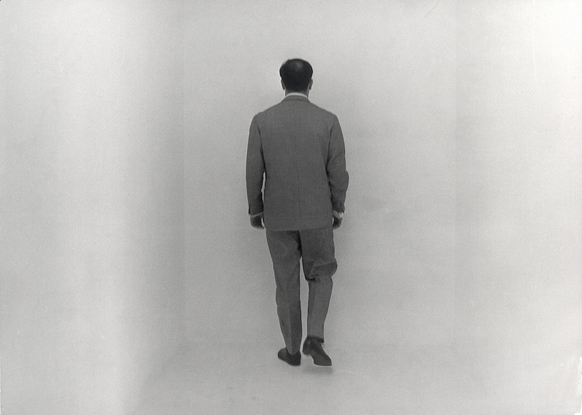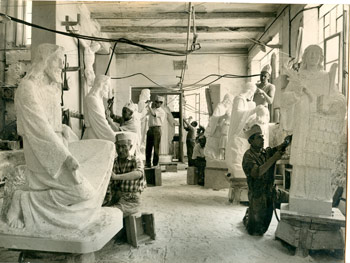|
"MUSEO D'ARTE ITALIANA 1985-2015"
30 ANNI D'ARTE CONTEMPORANEA
domenica 24 maggio 2015
dalle ore 10.00 Per onorare la coincidenza che spesso collega i luoghi particolarmente densi di valore con una curiosa ciclicità storica, domenica 24 maggio, al Castello di Rivara - Museo d’Arte Contemporanea, Franz Paludetto inaugurerà l’apertura della stagione espositiva e festeggiando i tre decenni di attività del Castello con una nuova serie di room installation, suggerendo, trent’anni dopo, una chiusura di quel cerchio che si iniziò a tracciare nel 1985 quando, pioniere visionario, insieme all’amico Aldo Mondino, Franz scoprì l’esistenza del Castello (allora in condizioni che soltanto un pioniere visionario avrebbe potuto proiettare nell’immagine che oggi abbiamo negli occhi) e decise di trasformarlo nella sede principale della sua attività di gallerista, curatore, mentore, scopritore di talenti. In questi trent’anni anni esperienze appassionate, di storia dell’arte, di vita, il Castello si è arricchito di una immane quantità di tracce, di segni di quei numerosi e significativi passaggi umani ed artistici che si sono susseguiti, conferendo a quel luogo un fascino ed un valore incommensurabili. Come dimenticare le mostre “Sei Artisti Tedeschi” del 1989 (con le opere di Stephan Balkenhol,Bernd&Hilla Becher, Isa Genzken, Candida Höfer,..); “Itinerari” del 1991 (con la sala di Felix Gonzalez-Torres); “Viaggio a Los Angeles” del 1992 (vengono presentate per la prima volta in Italia la “Giostra” di Charles Ray, la “Bang-Bang Room” di Paul McCarty ed i lavori – Disegni – di Raymond Pettibon); la mostra “Una Domenica a Rivara” del 1992 (di cui è ancora visibile l’azione/installazione “La Fuga” di Maurizio Cattelan) e le mostre personali di Aldo Mondino (1985-1991-2005), Gianni Piacentino (1988), Dan Graham (1991), Gordon Matta Clarck (1991), August Sander (1992), Paul Thek (1992), Allan McCollum (1993), Joseph Beuys (1993), Candida Höfer (1994), Pia Stadtbäumer(1995-2007-2010), Hermann Pitz (1990-1997-2012) e Sergio Ragalzi (1988-1998-2010), … Del resto, tornando alle coincidenze, circa centotrent’anni prima, in quello stesso spazio, si consumava una storia con moltissime analogie rispetto a quella di Franz e dei suoi artisti: l’istrionico artista ed intellettuale Carlo Pittara, infatti, innamoratosi del luogo, chiamava a sé un cenacolo di artisti provenienti da diverse parti di quella che di lì a poco sarebbe stata l’Italia e da altri Paesi europei, dando vita ad un vero e proprio movimento artistico e culturale di respiro internazionale. Nello stesso spirito internazionale, ma con sguardo calato sulle esperienze maturate in ambito italiano, Franz mette oggi a disposizione del territorio quel patrimonio enorme costituito dalle opere del Museo d’Arte Italiana, ospitato nel Castello Medievale (o Castel Vecchio) del complesso di Rivara, arricchito da nuove room installation, a cura degli artisti che hanno animato il movimento torinese tra gli anni ’80 ed oggi, come Francesco Sena (Il pasto di ogni giorno), Sergio Ragalzi (Black-Out), Domenico Borrelli (Zero gradi), Paolo Grassino (T), Nicus Lucà (Insulti), Maura Banfo (La Torre dei Sogni), Paolo Leonardo (Urban Icons), Adriano Campisi (Un gesto irriducibile), Carlo D'Oria (Interferenze), Enzo Bodinizzo (Decima), Bartolomeo Migliore (The Circle Soundz), Salvatore Astore (Amnesia), Jessica Carroll (Pianta Acquatica), Alessandro Bulgini (Decoro Urbano…), Bepi Ghiotti (Compensating Filters), Nicola Bolla, Plinio Martelli (Non c'è il tempo di morire) e Pierluigi Pusole… e nuovi giovani proposte come quelle di Valeria Vaccaro (What remains ) e Simone Benedetto (Together Alone). Una storia complessa lunga trent’anni, nata sotto la buona stella di un significativo precedente storico, raccontata da Franz Paludetto per essere “restituita” al luogo caleidoscopico che l’ha resa possibile. Hanno dato il loro contributo e sostegno in questi primi trent’anni: Jean-Cristophe Ammann, Mirella Bandini, Renato Barilli, Heinz Baumüller, Luca Beatrice, Giorgina Bertolino, Sebastiano Brizio, Daniel Buchholz, Benjamin H.D. Buchloh, Herbert Burkett, Kate Bush, Dan Cameron, Pierandrea Casati, Saretto Cincinelli, Gail Cochrane, Vittoria Coen, Claudia Colasanti Canovi, Emanuela De Cecco, Alessandro Demma, Edoardo Di Mauro, Paolo Fossati, Alan Friedman, Rudi Fuchs, Alessandra Galletta, Albino Galvano, Olga Gambari, Elio Grazioli, Marlis Grùterich, Martin Hentschel, Fritz Heubach, Anthony Iannacci, Roberto Lambarelli, Corrado Levi, Dirk Lukow, Kate Macfarlane, Gregorio Magnani, Robert Nickas, Hans-UIrich Obrist, Luca Piciocchi, Francesco Poli, Anne Rorimer, Gabriella Serusi, Serena Simoni, Raimund Stecker, Ursula Trüdenbach, Giorgio Verzotti, Marisa Vescovo, Angela Vettese, Vera Vita Gioia, Emilio Villa, Benjamin Weil, Denys Zacharopoulos, Alberto Zanchetta… Hanno lasciato a Rivara una traccia della loro presenza artisti come: Mario Airó, Stefano Arienti, John M. Armleder, Polly Apfelbaum, Salvatore Astore, Michael Bach, Stephan Balkenhol, Gisela Bullacher, Angela Bulloch, Miriam Cahn, Maurizio Cattelan, Umberto Cavenago, Giorgio Ciam, Elvio Chiricozzi, Maureen Connor, Grenville Davey, Anke Doberauer, Jürgen Drescher, Ulrich Erben, Andreas Exner, Sylvie Fleury, Dominique Gonzales-Foerster, Peter Friedl, Felix Gonzalez-Torres, Dan Graham, Candida Höfer, Honert Martin, Michael Landy, Nicus Lucá, Eva Marisaldi, Marco Mazzucconi, Gordon Matta-Clark, Plinio Martelli, Matthew McCaslin, Allan McCollum, Paul McCarthy, Aldo Mondino, Hermann Nitsch, Marcel Odenbach, Julian Opie, Raymond Pettibon, Gianni Piacentino, Hermann Pitz, Bernhard Prinz, Pierluigi Pusole, Sergio Ragalzi, Charles Ray, Paul Renner, Wiebke Siem, Wolfgang Schlegel, Pia Stadtbäumer, Rudolf Stingel, Andreas Schön, Michael van Ofen, Maurizio Vetrugno, Luca Vitone, … Quando: 24 maggio – 8 novembre 2015 (opening su invito 24 maggio 2015 dalle ore 10.00) Orari: ven 15 – 15 | sab-dom. 10 -13 15 – 19 o su appuntamento Dove: Castello di Rivara – Museo d’Arte Contemporanea | Piazza Sillano 2 | 10080 Rivara (To) Info: +39 0124 31122 | www.castellodirivara.it | info@castellodirivara.it |
|


















